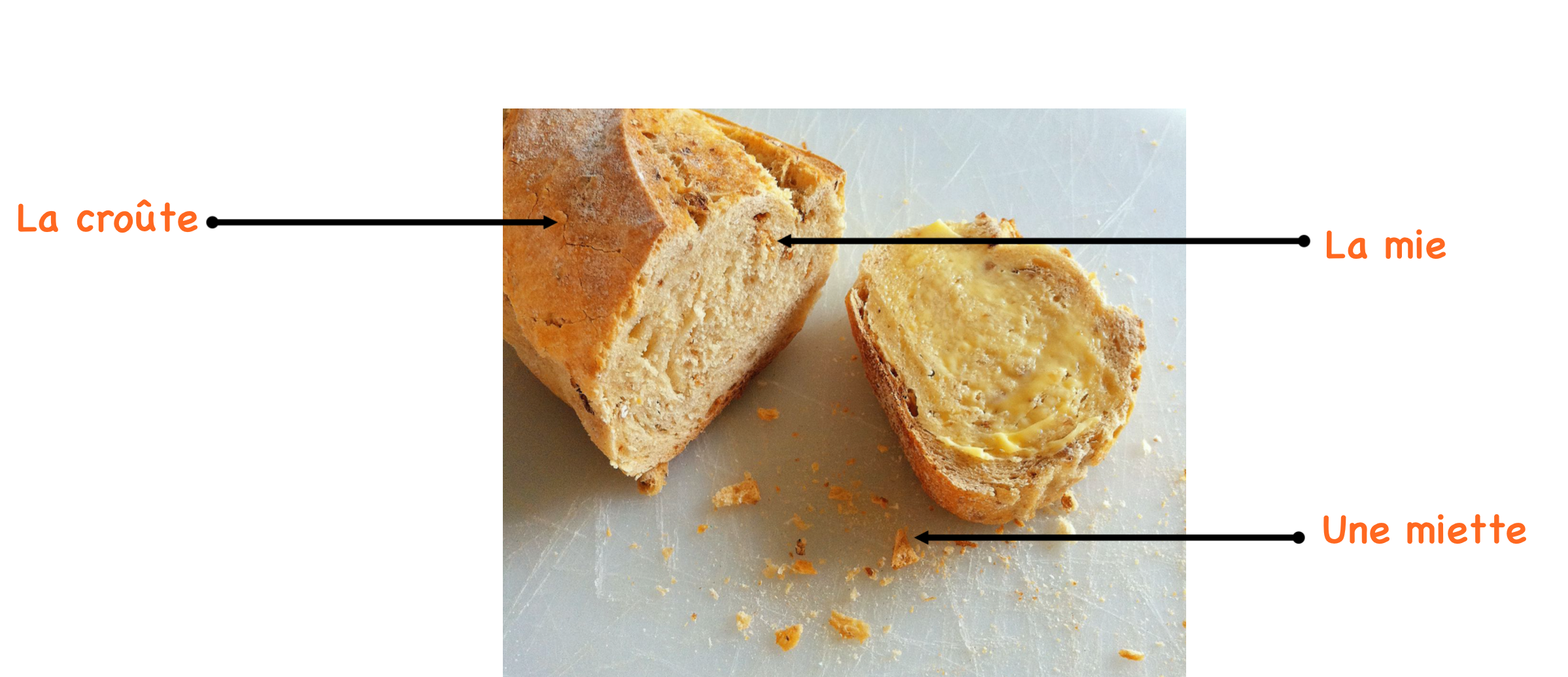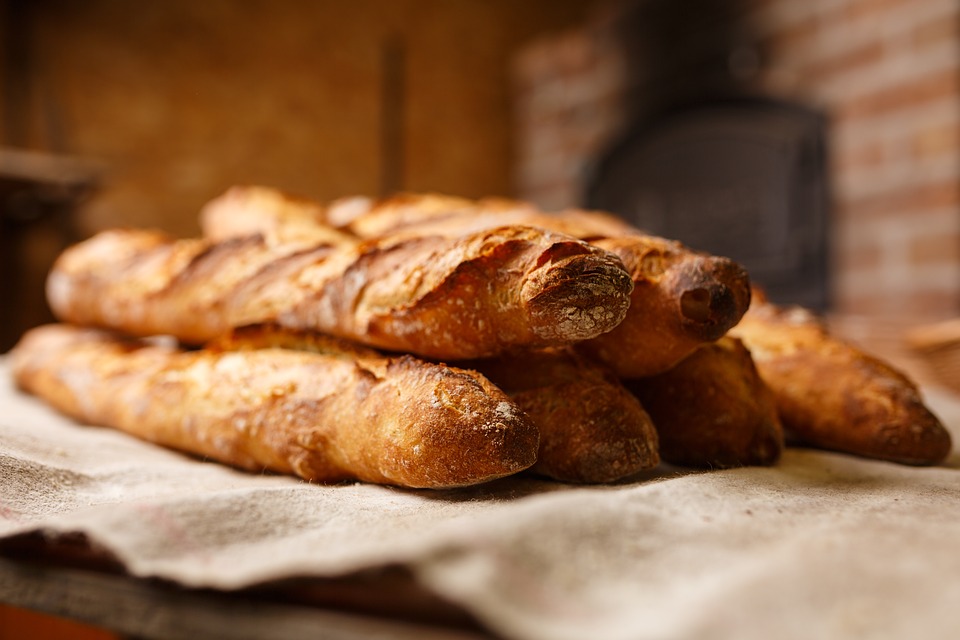
How to Make Authentic French Baguettes at home
Learn how to make this iconic French food item at-home with an authentic recipe that uses only 3 ingredients.
So you want to make authentic French baguettes at home? We salute you and love that you arrived at this article because we are passionate about this topic. We feel that making bread from home is one skill you can be truly proud of because, in general, bread is such a primordial food that it has become essential to our daily routine. Whether you use it for a sandwich, as the base of a tartine (kind of an open-faced sandwich common in France), or to eat alongside your favorite dip, bread is an incredible item to know how to make on your own. Of course we can get fancy and make authentic French baguettes that are shaped like the ones you see in store windows or add unique ingredients to make something like a focaccia bread (like the Italians), but bread is something we eat almost daily and we want to show you how. In this post, we want to teach you how to make your own authentic French Baguettes along with teaching you some cool French food vocabulary that will help you navigate through other French Recipes. To get started, we’d like to take you on a quick walk down memory lane for some history of the French Baguette. If you'd rather cut to the chase and skip the history and french lesson this time, you can scroll to the bottom for our authentic French Baguettes recipe.
The History of the French Baguette
Ask a French person how long baguettes have been a part of their culture and you’ll likely get a very puzzled look. That’s because bread has been such an essential part of French culture and cuisine for so long they probably can not remember. Much like the rest of the world, bread is a key piece of many popular dishes, but the baguette itself is very specific and unique to France. We’ll explain. Originally in France, bread was made of whole wheat and had an earthy, brown color. It was baked in round shapes and sold as une miche (a rounded bread loaf). French people were crazy for bread and it made up about 98% of what French people consumed in the 18th Century. To put that into perspective, a French person could eat about 3 pounds of bread a day!
With this enthusiastic consumption of bread, something unique happened. It became a symbol of the ‘essentials’ and, what was originally a miche bread loaf, became transformed into the shape we know as a lengthy baguette. Why did this happen? In typical French fashion, it was due to the Aristocracy who demanded a form of privileged-bread to please the people in power at the time. Compared to the other types of bread, the baguette would make more croûte (crust) which was a delight for the French elite who did not want to eat as much of la mie (the white part inside the bread). To dig a little deeper and shed light on a not-so-happy topic, there is also an arguable element of racism to the baguette. The French elite had a habit of separating themselves from their own people, including people of color. They had this notion that things looked better white. This was because people associated the color white with things that were pure, high end and of a social ‘ascension.’ If you read between the lines, you can paint your own picture there. Essentially, they tweaked the original recipe, which used whole wheat flour (and would be dark in color) and made it whiter when they would pétrir la pâte (knead the dough) very quickly. This actually stripped away the traditional taste of bread which was preferred outside of Paris. It took a while for all of France to welcome la baguette and, while it was traditionally a Parisian creation, it is now a French cliché and must be eaten within the hour (according to specialists).
Have no fear, in another typical French fashion moment, the people eventually protested. After the French Révolution in 1789, one of the demands of the people of France was Le Pain Égalitaire which would legally force bakers in 1793 to bake the same bread for everyone or they would go to prison. Et voila! This is how the baguette for everyone was (legally) born!
The Baguette Today
The French Baguette is so popular worldwide that the French Government, along with the la Confédération nationale de la boulangerie-pâtisserie française (The National Confederation of French Bakeries), decided to apply to make the recipe of the French Baguette as an Intangible Heritage at the UNESCO in 2018.
President Emmanuel Macron said: “ La France est un pays d’excellence dans le pain parce que la baguette est enviée dans le monde entier. Il faut en préserver l’excellence et le savoir faire […]” saying that France is a country of excellence in terms of bread and the baguette is envied around the world and we must protect its excellence and savoir-faire.
To sum that up, bread is like a badge of honor for most of France. It is a way to measure the price of things and understand any inflation that might be happening in a said time. There are also subtle taste and style preferences among French people when it comes to bread. Have you ever thought about how you like your bread? Take a look below and let us know how you prefer bread in the comments section at the end of this article:
Bien cuite - Well Done
Blanche - White (lightly baked)
Croustillante (crunchy)
Complet (whole-wheat)
De campagne (country style)
Anatomy of a French Baguette
There is only two things that make up the anatomy of the French Baguette.
La mie: the white inside of the baguette. French people refer to la mie as being moelleuse (soft), aérée (airy), or consistante (heavy).
Loaves of bread that sliced and are made of only la mie, are called, pain de mie.La croûte: the outside part of the baguette, or the crust. The crust of the baguette is what determines how good a baguette is.
French people refer to la croûte as being croustillante (crunchy).
An Authentic French Baguette Recipe
Baking bread can be seen as a very difficult task. However, our Founder, JP, wanted to teach you a simple recipe he learned when he was 5 years old growing up in France. With this recipe, you will be able to make warm baguettes croustillantes easily using only 3 ingredients (+ water)! If you prefer, you can watch JP teach you step-by-step how to make baguettes via our Instagram LIVE workshop with Time Out New York or keep scrolling to read the recipe.
Read the Recipe
Ingredients
375 grammes de farine (3 cups of flour)
300 ml d’eau tiède (1 1/4 cup of warm water)
1 sachet de levure déshydratée (a packet of dry activated yeast)
1 cuillère à thé de sel (1 tsp of salt)
Tools Needed
un saladier (a mixing bowl)
une cuillère en bois ou une Maryse (a wooden spoon or a spatula)
un moule à baguette, ou une plaque pour le four (a pan for baguettes or a baking tray)
un lèchefrite ou une plaque de cuisson (a drip tray or just another baking tray)
Directions
Dans un bol, mettez le sachet de levure déshydratée et ajouté une partie des 300ml d’eau tiède pour couvrir. Laissez reposer dix (10) à quinze (15) minutes.
In a mixing bowl, add the packet of yeast and add a portion of the 300ml of warm water to the mix. Set aside and let it activate for 10 to 15min.
Ajoutez le reste de l’eau et la cuillère à café de sel.
Then, add the rest of the water and the salt. Stir.
Ajoutez la farine et mélange avec la Maryse ou la cuillère en bois.
Add the flour and stir with a spatula.
Couvrez le saladier avec un torchon propre.
Cover the bowl with a clean & wet kitchen towel.
Laissez reposer dans le four pendant 1h30 dans votre étuve faite maison.
Proof the dough for 1 hour and 30minutes in the oven (turned off).
Une fois la pâte levée, sortez-la du four et formez vos baguette sur le moule et faites de petites incisions sur le dessus. Humidifier vos baguettes.
Once the dough has risen, take it out of the oven and shape your baguettes (if the dough is too sticky, you can add a bit of flour). Make small cuts on the top and spray with water so the dough becomes moist again.
Mettez votre lèchefrite en bas du four et remplissez-le d’eau. Enfournez les baguettes et faites cuire 25 minutes à 225 degrés Celsius jusqu’à ce que les baguettes soient bien dorées.
Add water to the oven baking sheet and put it at the bottom of the oven. Bake your baguettes for 25min at 450 degrees Fahrenheit. Bake until golden brown
Dégustez !
Enjoy!
Merci!
We really hope you enjoyed this article. If you did, click the ‘heart’ icon below and don’t forget to share it with your friends. Now, let’s see what you learned. Click the link below to take our short quiz that reviews some information from this article.
Burger vs. Baguette
The French have been cheating on their beloved baguette with a saucier culinary import - the hamburger.
It’s no secret that the french are famous for their baguette, especially if you follow our blog! One might even say they are sacred (especially if you ask France's President Emmanuel Macron who is lobbying to have the french delicacy listed as a Unesco cultural treasure). The French government actually regulated when bakers could take their vacations at one point so that its citizens wouldn’t ever be faced with a shortage of their favorite bread. However, a recent study shows that that the French are cheating on their beloved baguette with a much less authentic culinary import - the hamburger.
According to a recent BBC reported study, French citizens purchased approximately 1.5 billion burgers last year and only about 1.2 billion baguettes which equals to 14 times more burgers than a decade ago. The figures include the purchase of baguette sandwiches, known as jambon-beurre. The study also showed that nearly 85% of all restaurants in France now have at least one burger on their menus.
French purists have nothing to fear however as Gira Conseil, who provided the data for the study, says the report has been greatly exaggerated by stating “Let me explain: baguettes are taken away and eaten with fingers, burgers are mostly eaten sitting down with a knife and fork.” “It’s not comparing like with like.” Regardless of the French obsession with the burger, one aspect that will always make it uniquely French is that unlike their American counterparts, the French enjoy their burgers with a fork and knife—a concession even McDonald’s has made in the land of the baguette.
We hope you've enjoyed learning about the culinary French battle: Burger vs. Baguette! While may French are skeptical about the legitimacy of their reported burger obsession, we'd love to hear what you think about the Gira Conseil study. Comment below!
Battle of the Baguette
"Excellence and expertise must be preserved, and that is why it should be heritage-listed," President Macron stated in an interview with French radio as French artisans have voiced concern about mass-produced, low quality imitations of the beloved French bread. "A baguette is the symbol of France, like the Eiffel Tower,"
Battle of the Baguette
The French president Emmanuel Macron has stated recently that the baguette should be listed as a Unesco cultural treasure. In a statement in support of a national bakers’ association, he affirmed that:
"The baguette is the envy of the whole world.”
"Excellence and expertise must be preserved, and that is why it should be heritage-listed,"
Inspired by the success of Italy's Naples pizza, which was protected by the UN's cultural body last year after an intense lobbying campaign (including a petition signed by more than two million Italians), Macron hopes to add baguettes to the coveted list that aims to save traditions from.
The bakers say it is not just the name and shape, but the recipe and ingredients that need to be protected.
"Excellence and expertise must be preserved, and that is why it should be heritage-listed," President Macron stated in an interview with French radio as French artisans have voiced concern about mass-produced, low quality imitations. "A baguette is the symbol of France, like the Eiffel Tower," said Dominique Anract, the president of the national confederation of baking and pastry.
"When I see the the growing dominance of French supermarkets and convenience stores in the sale of bread, I say to myself that we must act.”
The traditional baguette is already protected in France by a 1993 law that instructs that the bread must only be made from wheat flour, water, yeast and salt and can not be frozen or contain added preservatives.
We hope you've enjoyed learning about the Battle of the Baguette! Do you think the legendary bread has earned it's place among the list of Unesco cultural treasures? Leave a comment below and tell us why!











